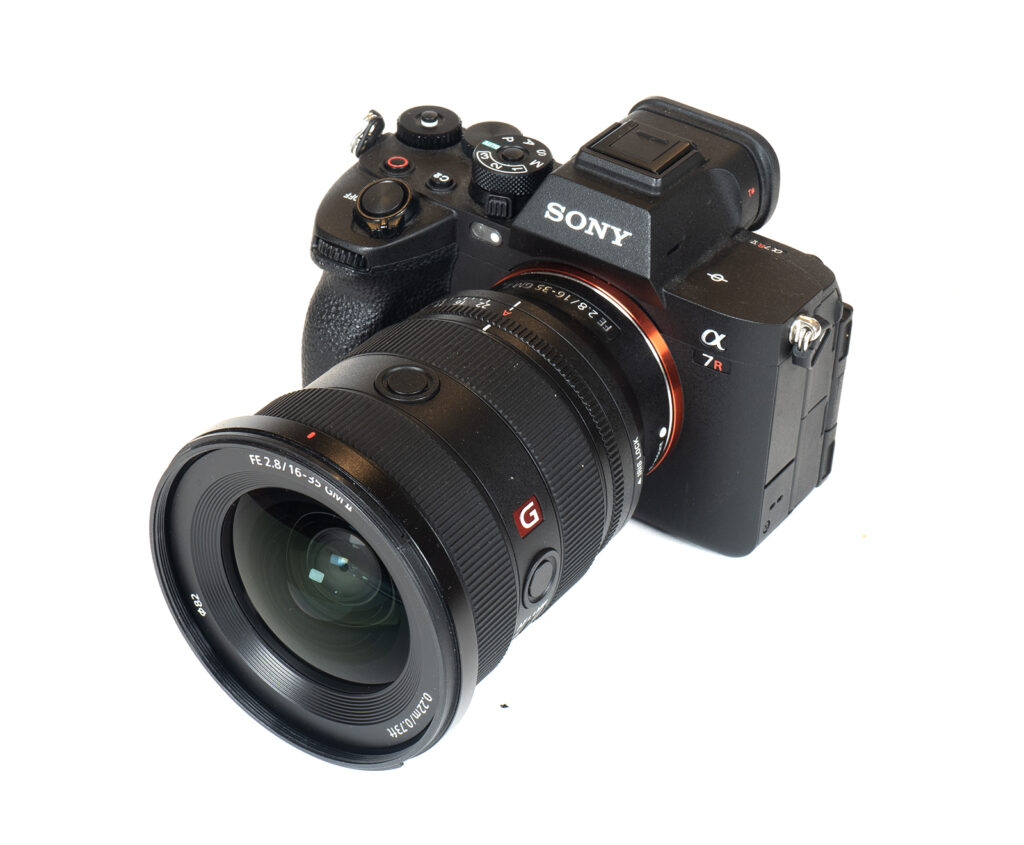Introduction
The Sony FE 16-35mm f/2.8 GM was a good first shot when it came out, but it’s also a lens that has its flaws, specifically at f/2.8, where the corners aren’t ideal, and the peak performance isn’t all that impressive either. In recent years, Sony released A LOT of ultra-wide angle lenses, and this should have come with some insights on how to improve the successor – the Sony FE 16-35mm f/2.8 GM II. Other than the expected optical changes, the MK II is also fairly different mechanically. Sony managed to shave off 20% of the weight, and it’s also a little more compact. Unsurprisingly, the price tag also increased from $1900 to $2300. So, let’s see whether the upgrade is worth it.
In terms of build quality, the FE 16-35mm f/2.8 GM II is made to professional standards, of course. That’s what GM lenses are about, after all. The lens is made of a combination of lightweight yet sturdy engineered plastics based on a metal mount. Everything feels tightly assembled, and the control rings operate smoothly. The lens is sealed against dust and moisture, but it still extends a bit when zooming out to 35mm. The aperture ring can be “de-clicked”. A small, petal-shaped lens hood is part of the package.

Sony has incorporated no less than Four XD (“extreme dynamic”) linear AF motors, so autofocusing is both fast and silent – about twice as fast as its predecessor. Manual focusing works “by wire”, as usual. A floating focusing system is used to optimize close-focus performance, and the lens is capable of producing a maximum object magnification of 1:3.1. Focus breathing has been minimized for video shooting – and breathing compensation is available with most modern Sony cameras. An image stabilizer has not been implemented – which is a good thing. Ultra-wide lenses are already difficult to manufacture without this.
| Specifications | |
|---|---|
| Optical construction | 15 elements in 12 groups (3x XA, 1x aspherical, 1x ED aspherical, 1x Super ED, 2x ED) |
| Number of aperture blades | 11 (rounded) |
| min. focus distance | 0.22m (max. magnification 1:3.1) |
| Dimensions | 87.8 x 111.5mm |
| Weight | 547g |
| Filter size | 82mm |
| Hood | Petal shape, bayonet type, supplied |
| Other features | focus hold button, de-clickable aperture ring, dust- and moisture-resistant, fluorine coating, floating system |
Distortion
In RAW images, the barrel distortion is comparatively mild at 16mm – just 1.6% doesn’t require a lot of correction. Zooming out into the middle range removes most of the distortions before increasing again to 1.8% pincushion distortion at 35mm.
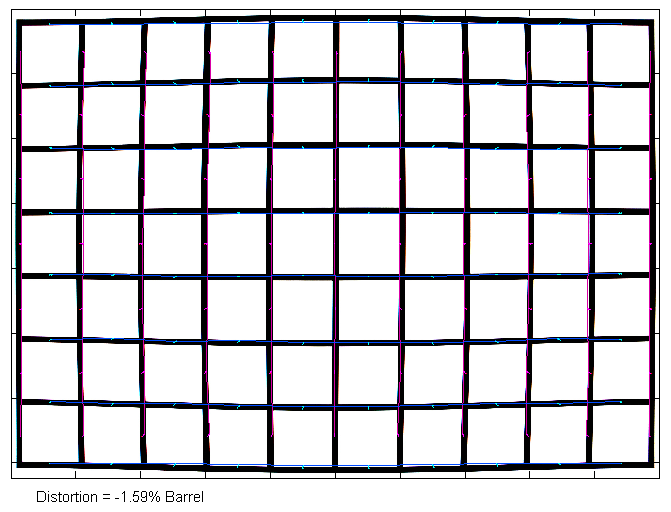
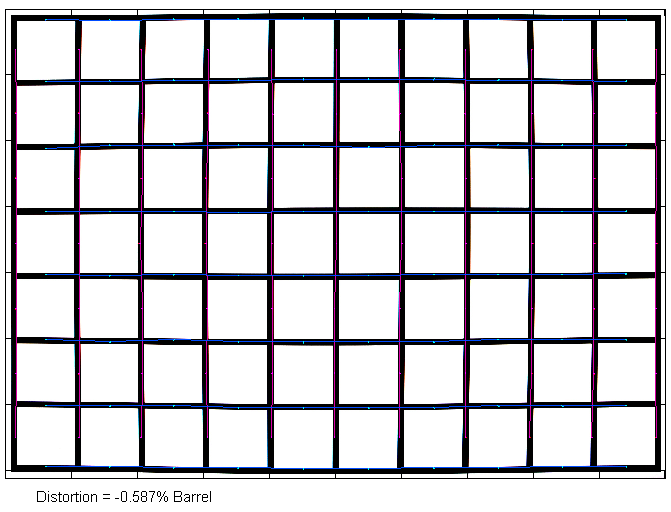
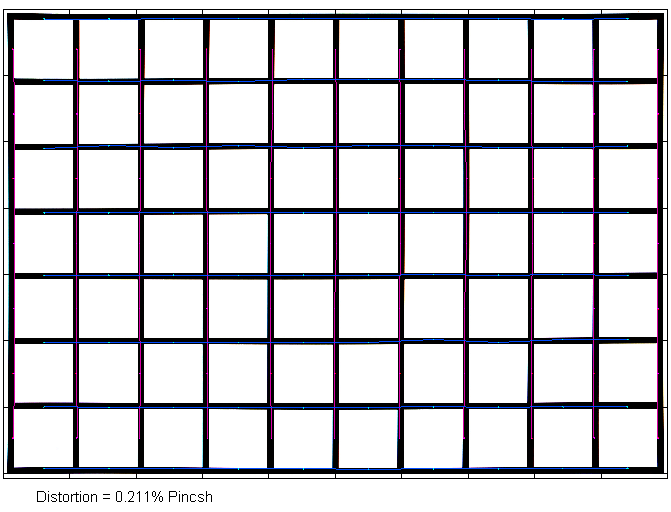
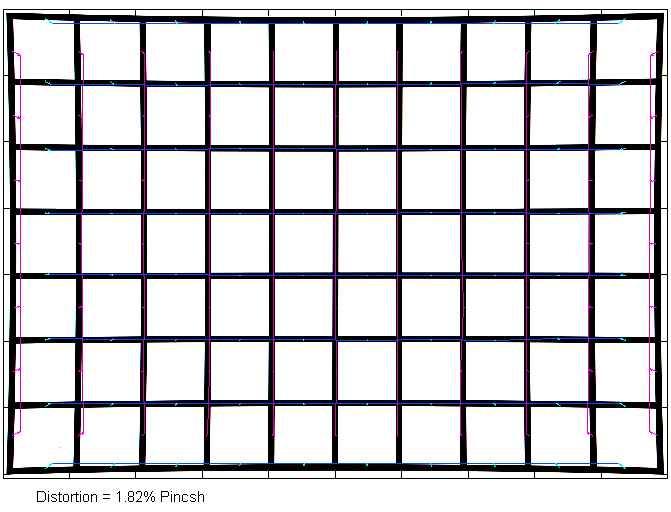
With activated auto-correction, this is not an issue anymore, with distortion levels near the zero mark here.


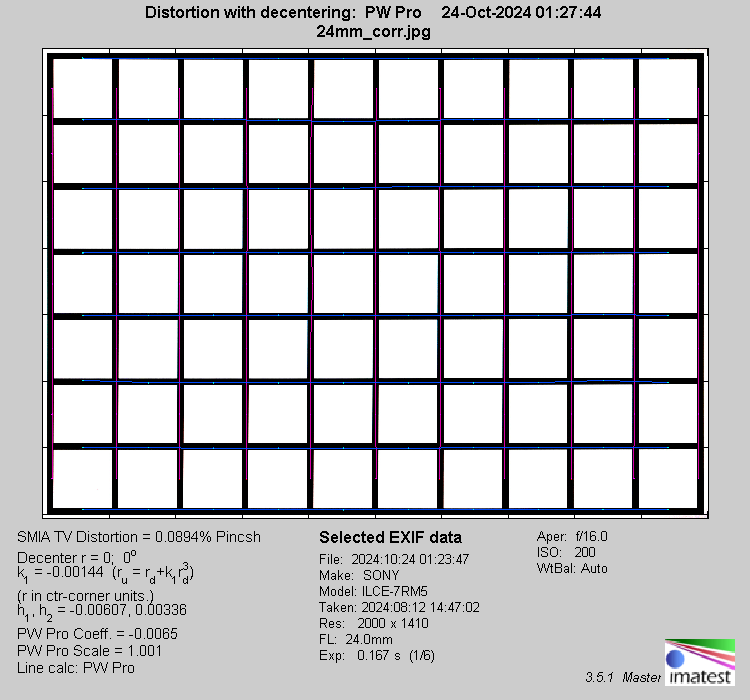
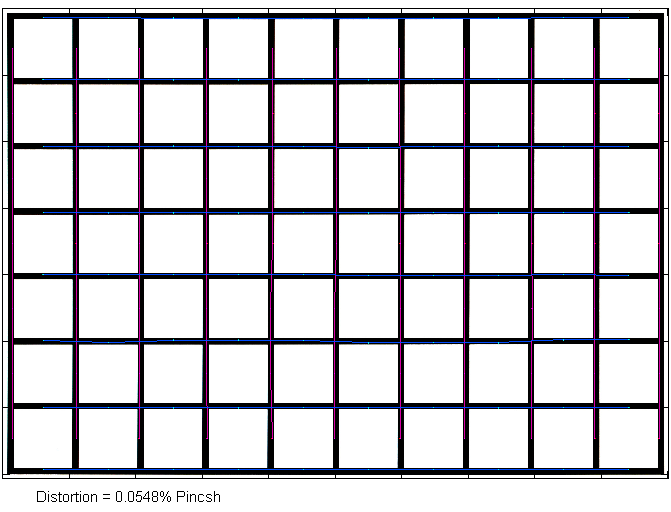
Vignetting
The RAW vignetting is typical for a fast ultra-wide zoom lens. The light falloff peaks at over 3 EV (f-stops) at 16mm f/2.8 and it eases the move stop down and zoom out. The vignetting is still fairly high at f/5.6 specifically at the wide end, but this is also rather normal here.
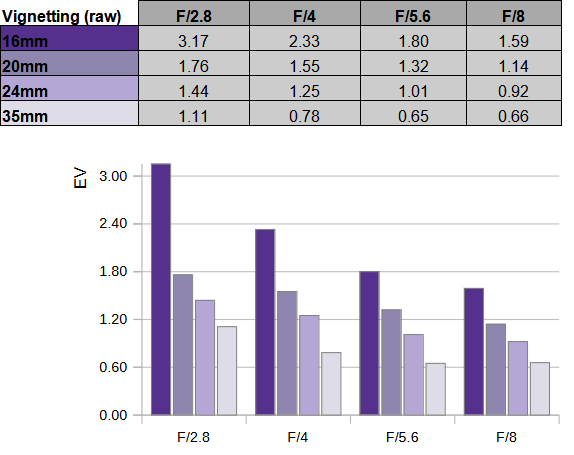
Activated image auto-correction reduces the vignetting to non-disturbing levels – even at max aperture. Keep in mind that vignetting correction increases the sensor noise due to the signal boosting though.
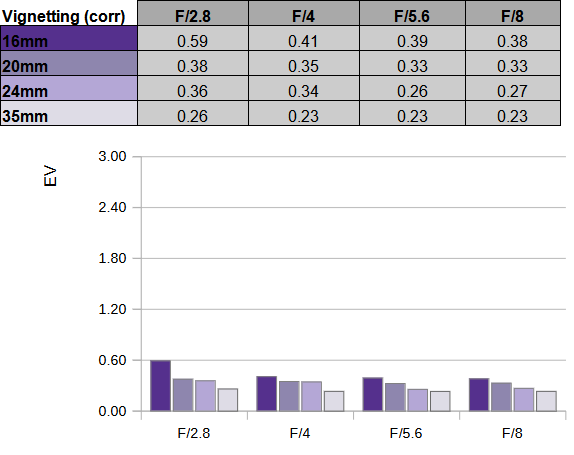
MTF (resolution)
The FE 16-35mm f/2.8 GM II produced impressive resolution figures in the lab. In the wide to mid-range, the lens is capable of delivering prime lens performance. The center performance is already superb at f/2.8 and the near-center quality is following closely behind. The outer image field is generally on a very good level.
This changes a bit at 35mm. The results are a bit softer here – at least with the tested sample. Stopping down to f/4, better f/5.6 boosts the quality quite a bit, though.
The centering quality of the tested sample was mediocre, with quite a bit of variability, specifically at the “long” end. Sample variations are a thing with such ultra-wide lenses. The field curvature is moderate.
Please note that the MTF results are not directly comparable across the different systems!
Below is a simplified summary of the formal findings. The chart shows line widths per picture height (LW/PH) which can be taken as a measure of sharpness. If you want to know more about the MTF50 figures, you may check out the corresponding Imatest Explanations.

Chromatic Aberrations (CAs)
Lateral CAs are very well controlled. They stay well below the 1px mark at the image borders across the range.

Sun-Stars
Wide-angle lenses are often used for nighttime images – and sun stars can be a nice effect around pointy, bright light sources. The Sony lens has no less than 11 aperture blades which is, on paper, not ideal for sun stars. However, some fairly distinct rays appear at f/8, and they are pretty nice at f/11, with the best results at f/16 (as usual). These 11 aperture blades produce A LOT of rays, which may not be to everybody’s taste.

Flare
Flare is always a difficult topic to discuss. We always mention that you can push all lenses beyond their limits in this respect, and this also applies to the Sony lens.
Having said that, the Sony lens seems to do better than most in this respect – which suggests that the coating of the elements is quite efficient. There’s a tad of glare, but it’s not too bad, as you can see below (note: I boosted the shadows a bit here).

Competition
The Sony FE 16-35mm f/2.8 GM II (shown to the left) faces some stiff competition from both within the Sony lens lineup as well as from external players. Sony also offers the FE PZ 16-35mm f/4 G and the FE 16-25mm f/2.8 G (to the right). The PZ 16-35mm f/4 G has a power-zoom mechanism, which is surely an attractive option for video shooters. Optically, it’s pretty good, although it doesn’t reach the peak performance of the GM lens. Especially for video, this shouldn’t matter, though.
We haven’t tested the FE 16-25mm f/2.8 G yet. If you’ve got a 24-xx zoom lens, it will make sense – after all, an overlap in the range is rather useless except for performance reasons. The G lens seems to be slightly worse than the GM II if we can believe other sources.
Beyond Sony, there’s the Sigma 14-24mm f/2.8 DN DG ART (center). Again, yet to be tested, but it seems to be on the same level as the GM. It’s also cheaper. You may not like the bulb-like front element, which prevents the use of filters.
Tamron has the 17-28mm f/2.8 Di III RXD but that’s more targeting the consumer market – just like Sigma’s 16-28mm f/2.8 DG DN Contemporary. And then there are prime lenses … which yours truly prefers for wide-angle photography.

Sample Images
The Sony FE 16-35mm f/2.8 GM II does many things right - if you've got a good copy, at least. It's plenty sharp at the wide end and well into the middle range. At 35mm, there's a drop in quality, so it's best to stop down 1-2 f-stops. Unlike Sony's G wide-angle zoom lenses, the GM has good native distortion control, so auto-correction doesn't have to work quite as hard here. Lateral CAs are well-controlled, and vignetting stays within the typical limits of a lens in this class. The sun star rendering is decent.
The build quality is excellent but that's something you expect from a lens in this price class. We only wished that Sony had managed to implement an internal zoom mechanism. The reduced weight and slightly more compact dimensions are always welcomed. The AF is fast and silent. Videographers will appreciate the de-clickable aperture ring as well as comparatively low focus breathing and breathing compensation support. If you are into close-up photography with ultra-wide angle lenses, the impressive close-focus capabilities could also be interesting for you.
Overall, the FE 16-35mm f/2.8 GM II is a clear improvement over its predecessor - and it's (mostly) worth the high price tag.
-
Optical Quality
-
Build Quality
-
Price / Performance


